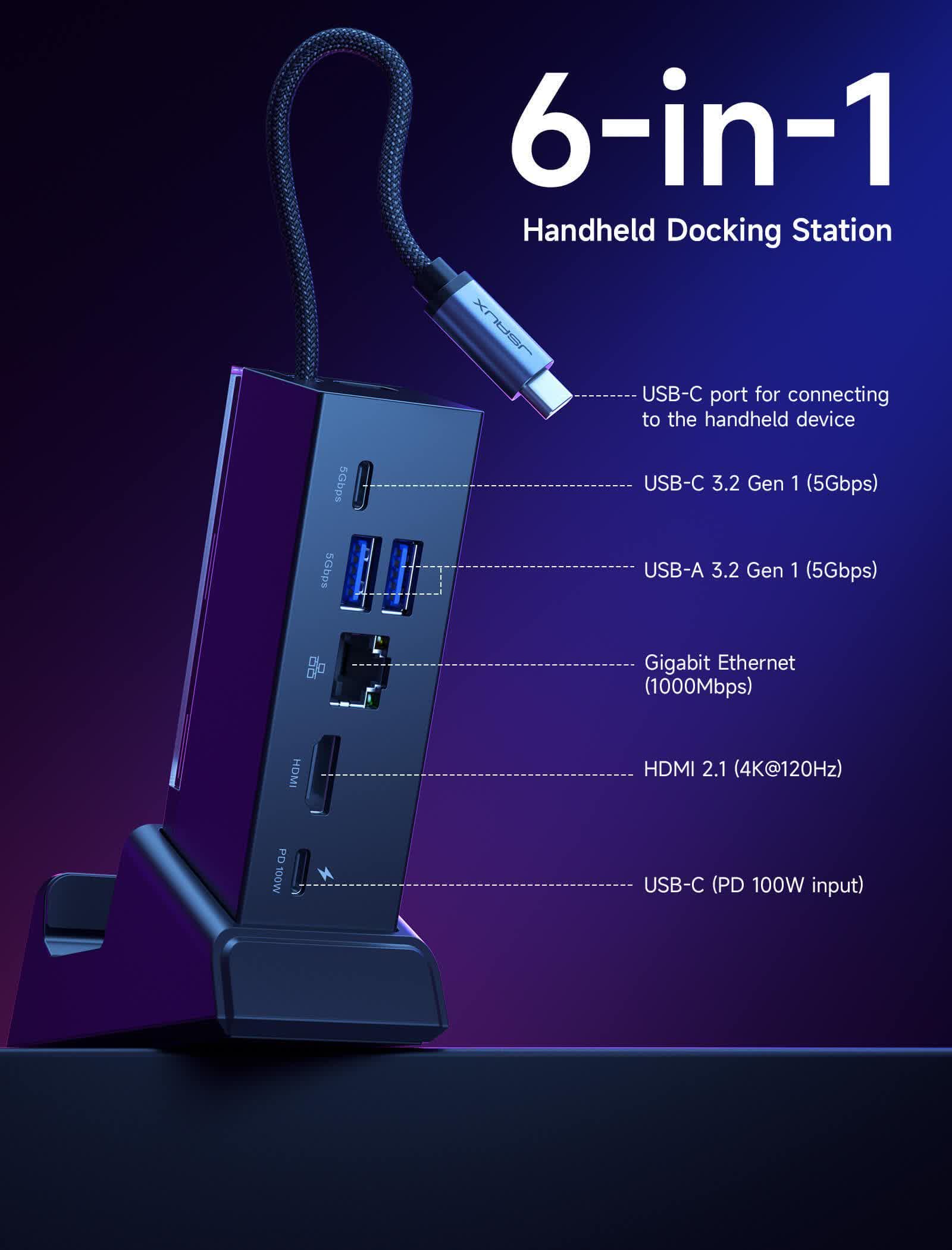Why it matters: Valve didn’t design the Steam Deck to serve as a desktop PC, but it might become a workable backup with the right equipment. Numerous companies, including Valve, provide docks with multiple ports for connecting handheld gaming PCs to monitors and other devices. However, JSAUX’s newest variant might be one of the best value models available.
Accessory maker JSAUX has released some of the highest-rated Steam Deck docks since the device’s launch. The company’s new HB609 revision adds a faster HDMI connection, a vertical orientation, and support for the Lenovo Legion Go at a reasonable price.
Previous models could connect a Steam Deck or Asus ROG Ally to several ports for connecting displays, storage, controllers, mice, and keyboards at multiple price tiers. The HB609 is JSAUX’s first model to support Lenovo’s handheld and one of the only models that push the HDMI connection to 4K 120Hz, although the spec sheet still lists it as HDMI 2.0. Handheld gaming PCs can’t run modern AAA games like Elden Ring and Helldivers 2 at that resolution or frame rate, but older or less intense titles like Stardew Valley might work.

Other outputs include a primary USB-C port for connecting to the main device, a separate 5Gbps USB-C 3.2 Gen 1 port, two USB-A 3.2 ports with the same capabilities, a gigabit Ethernet port, and a 100W USB-C charging port. The HB609’s main compromise compared to Valve’s official dock or JSAUX’s 11-port HB1101 is the lack of a DisplayPort.
The HB1101 can also reach 4K 120Hz but, like Valve’s hub, carries an $80 MSRP. At $45, the HB609 appears to be the only 4K 120Hz dock available in its mid-tier price range.

It is unclear why docks from JSAUX and other manufacturers mostly don’t support similar portable PCs like the MSI Claw, GPD Win, and Ayaneo Next. Additionally, it remains to be seen if future arrivals like Adata’s XPG Nia and the Zotac Zone might spur the development of more generic docks.
External GPU support is another curious area. GPD has heavily promoted their use to bring the handhelds’ graphics performance closer to laptops or desktops, but they require ultra high-bandwidth connections like OCulink, USB4, or Thunderbolt 3. Moreover, testing suggests high-end desktop cards can suffer noticeable performance penalties over OCulink.





